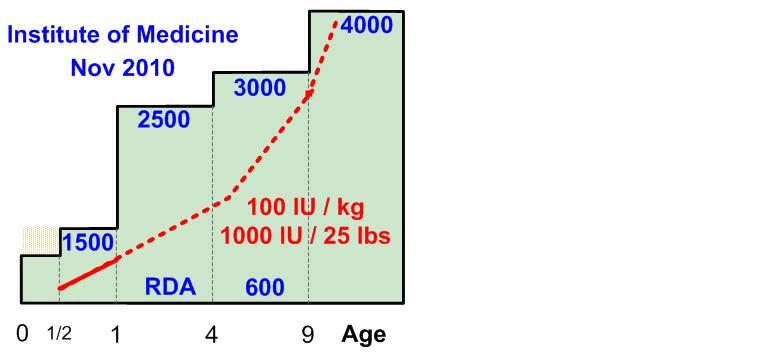Child Bone health – (incorrect) recommendations by US Pediatric and Bone Health groups
Optimizing Bone Health in Children and Adolescents
Pediatrics, Clinical Report Published online September 29, 2014
From the American Academy of Pediatrics
Neville H. Golden, MD, Steven A. Abrams, MD, COMMITTEE ON NUTRITION
📄 Download the PDF from VitaminDWiki.
ABSTRACT
The pediatrician plays a major role in helping optimize bone health in children and adolescents. This clinical report reviews normal bone acquisition in infants, children, and adolescents and discusses factors affecting bone health in this age group. Previous recommended daily allowances for calcium and vitamin D are updated, and clinical guidance is provided regarding weight-bearing activities and recommendations for calcium and vitamin D intake and supplementation. Routine calcium supplementation is not recommended for healthy children and adolescents, but increased dietary intake to meet daily requirements is encouraged. The American Academy of Pediatrics endorses the higher recommended dietary allowances for vitamin D advised by the Institute of Medicine and supports testing for vitamin D deficiency in children and adolescents with conditions associated with increased bone fragility. Universal screening for vitamin D deficiency is not routinely recommended in healthy children or in children with dark skin or obesity because there is insufficient evidence of the cost–benefit of such a practice in reducing fracture risk. The preferred test to assess bone health is dual-energy x-ray absorptiometry, but caution is advised when interpreting results in children and adolescents who may not yet have achieved peak bone mass. For analyses, z scores should be used instead of T scores, and corrections should be made for size. Office-based strategies for the pediatrician to optimize bone health are provided. This clinical report has been endorsed by American Bone Health.
See also VitaminDWiki
Vitamin D (40-70 ng) in Children’s Health – review Sept 2014
Primate Nutrient Requirements – 2003 US Govt
- (Note: 11 years ago the US govt declared that ALL primates must have D3, but not D2: are humans not primates?)
- Several papers on Vitamin D for critically ill children in Journal of Pediatrics – Aug 2012
- This earlier paper, in a Pediatrics journal, was not even referenced.
- Perhaps because it disagreed with the current authors - saying that vitamin D screening was needed sometimes
- Recommend 100 IU of vitamin D per kg of infant weight in Poland – July 2011 which has the following

The Red line is the average weight of children at that age.
This article recommends this amount up to age 12 months , others recommend it for up to age 12 years
The TOP articles in Infant-Child and Vitamin D are listed here:
{category}
